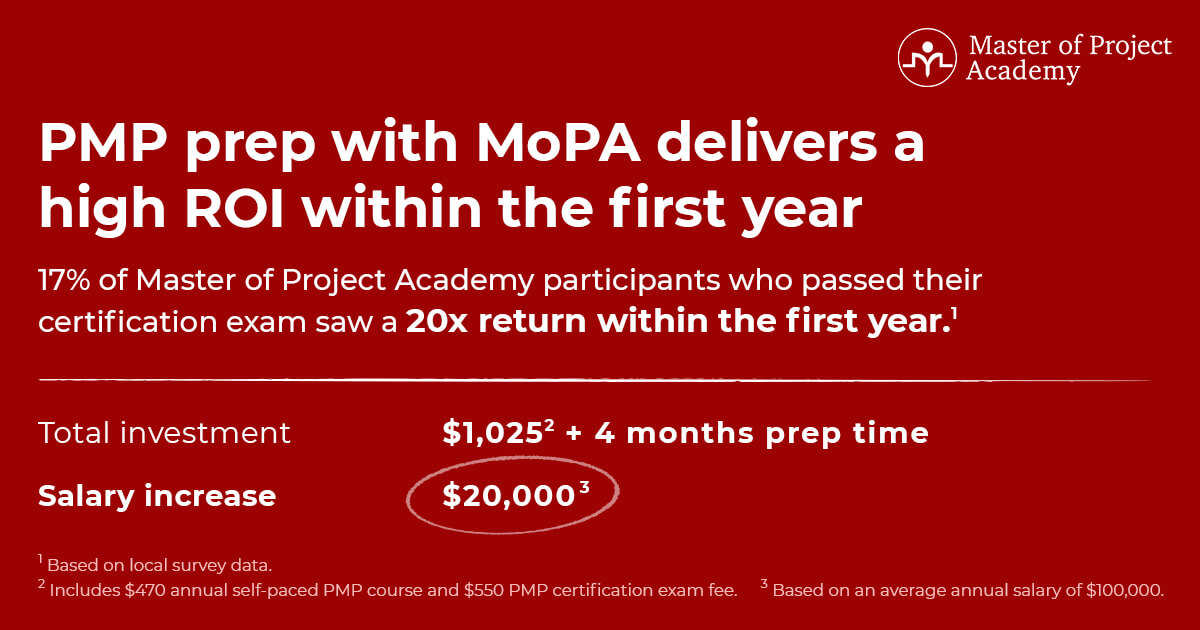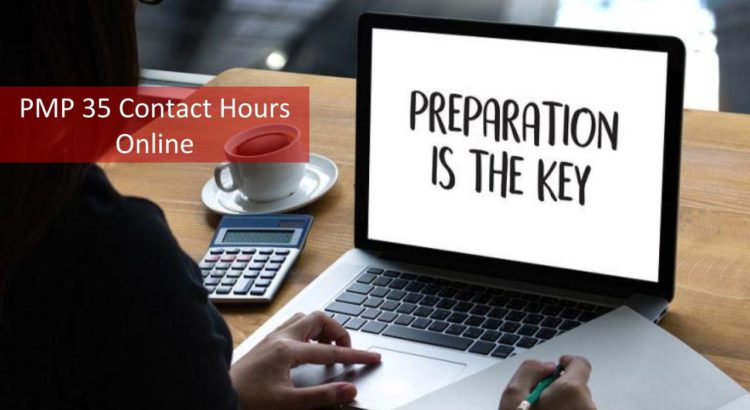For those who are considering pursuing the Project Management Professional or PMP certification offered by the Project Management Institute, you must make yourself intimately knowledgeable with all of the various PMP prerequisites required in order to sit for the exam. There are basically three components to satisfy before one can sit for the exam, two of which are variable and one which is “PMP 35 contact hours” is standard regardless. Each must be documented in detail before you are approved to sit for the exam.
Those three components are:
- Educational Background
- Project Management Experience
- Project Management Education
The third component, PMP 35 contact hours will be the main focus of this blog post today. This is a formal project management education. Specifically, someone wanting to qualify for sitting for the PMP exam must demonstrate that they have had thirty-five (35) contact hours of formal education in the area of project management.
PMP 35 Contact Hours Training Requirement
Let’s first review, in a little more detail, the first two components of qualification to sit for the PMP exam.
Possess a secondary degree (high school diploma or equivalent, or associate’s degree) and a minimum of five years (sixty months) of unique and non-overlapping professional experience in the project management discipline.
OR
Possess a four-year bachelor’s degree and a minimum of three years (thirty-six months) of unique and non-overlapping professional experience in the project management discipline
Attend our 100% Online & Self-Paced One-Hour Free PMP Training.
Once one of the above conditions is met, the candidate then must also participate in a course of formal project management education that provides no less than thirty-five contact hours, i.e. PMP 35 contact hours of actual instruction. Keep in mind that the training that you receive must be related to the specific work that a project manager performs. If it is not related, it does not qualify as relevant training and cannot be documented as such.
The PMP 35 contact hours training does not have to be obtained in one sitting. It can be accumulated over time, meaning that, relevant training that you have received in the past never expires and can be built upon as you work towards meeting the thirty-five-hour requirement. A “contact hour” is defined as an actual hour of formal training or instruction received.

Contact Hours Training Content
Be certain that the PMP 35 contact hours training covers the knowledge areas of project management and the associated processes of each:
Integration management
- Develop Project Charter
- Develop Project Management Plan
- Direct and Manage Project Work
- Manage Project Knowledge
- Monitor and Control Project Work
- Perform Integrated Change Control
- Close Project or Phase
Scope Management
- Plan Scope Management
- Collect Requirements
- Define Scope
- Create WBS
- Validate Scope
- Control Scope
Schedule Management
- Plan Schedule Management
- Define Activities
- Sequence Activities
- Estimate Activity Durations
- Develop Schedules
- Control Schedule
Cost Management
- Plan Cost Management
- Estimate Costs
- Determine Budget
- Control Costs
Quality Management
- Plan Quality Management
- Manage Quality
- Control Quality
Resource Management
- Plan Resource Management
- Estimate Activity Resources
- Acquire Resources
- Develop Team
- Manage Team
- Control Resources
Communications Management
- Plan Communications Management
- Manage Communications
- Monitor Communications
Risk Management
- Plan Risk Management
- Identify Risks
- Perform Qualitative Analysis
- Perform Quantitative Analysis
- Plan Risk Responses
- Implement Risk Responses
- Monitor Risks
Procurement Management
- Plan Procurement Management
- Conduct Procurements
- Control Procurements
Stakeholder Management
- Identify Stakeholders
- Plan Stakeholder Management
- Manage Stakeholder Engagement
- Monitor Stakeholder Engagement
In addition to the above-listed knowledge areas, the training should also include discussions on the five project management process groups:
- Initiating
- Planning
- Executing
- Monitor & Controlling
- Closing
What is the Purpose of PMP 35 Contact Hours Training?
The project management discipline contains forty-nine total processes, which represent various intersections between the ten knowledge areas and the five process groups. Understanding all of the processes and the role they play in the project management discipline is essential to your preparation for the PMP exam and should be an integral part of any contact training that you participate in.
Let us take a moment to clarify what ‘formal’ training means. That is, training that is acquired through the services of some type of reputable provider of such training, be that a community college, a major college or university, or some type of professional training provider. You can obtain this training via many mechanisms including face-to-face, online, and virtual methods.

PMP 35 Contact Hours Training Options
Given the above guidelines, let’s take a closer look at some of your options and how you might be able to accumulate the needed PMP 35 Contact Hours.
- Formal University or College Education – perhaps you took courses at either the undergraduate, or graduate (MBA, etc.) level that can be applied towards your contact hours. But take care to verify that such coursework maps directly map to the aforementioned project management knowledge areas. Otherwise, such coursework should not be counted towards your overall contact hour total.
- Continuing Education – if you have received project management education via the pursuit of continuing education, in some capacity, that can count towards your contact hours as well.
- Distance Learning – Classes that were taught by a live instructor or conducted as an online experience, possibly as a self-paced course.
- Employer-related training – Coursework provided by your employer (workshops, seminars, brown bag sessions) whose content can be logically mapped back to the aforementioned project management knowledge areas.
- Project Management Institute (PMI)-related knowledge acquisition – education attained by attending PMI chapter meetings or perhaps participating in a PMI Community of Practice (CoP).
Formal classroom training offers may advantages, amongst them being: an in-person trainer to answer questions, the motivation of being in a class situation, and they typically occur in a very compressed time frame.

What Is The Difference Between PDUs and Contact Hours?
It is very important to note here that there is a distinct difference between contact hours and professional development units (PDU’s). Professional development units are credits that you earn once you have become certified as a Project Management Professional. They can be achieved in an assorted number of ways. For instance through pro-bono work, demonstrated performance of project management methodology in a professional capacity, formal education in project management, self-study, or even teaching the subject matter yourself. You can accumulate Professional Development Units once you are certified. You have to do this in three-year cycles. Contact hours are accumulated before you actually become PMP certified. You can only acquire them through formal education (classroom, virtual, and distance learning) means. Attending a PMP 35 contact hours training is a prerequisite for PMP application.
PMP Online Training 35 Contact Hours – Important Points to Consider
To wrap this discussion, let’s discuss a little more in detail the option of getting online training to fulfill the thirty-five contact hour requirement.
One of your primary concerns for pursuing an online method for getting the necessary instruction is that the provider provides legitimate PMP 35 contact hours that will be approved and recognized by PMI. You can check recent student testimonials, references, and ask to training provider to send links of authentic and genuine student testimonials.
Key Attributes
What are some of the key attributes that you should be looking for when deciding on an online PMP course to take? Among the following are some of the things that the most effective online training courses offer:
- Provide a comprehensive curriculum on PMP material, including all knowledge areas and process groups
- For self-paced, you can download them on demand and use at your own convenience
- Provides a sufficient bank of sample exam questions to practice with. This can’t be overemphasized as you not only need to understand the material but also how PMI formulates the questions on the exam.
- Finally, provides a mix of video and audio lessons that you can download to any sort of device and view or listen to asynchronously
Online PMP training can provide many advantages including flexibility, enhanced means of access, and is typically cheaper than formal classroom alternatives.
Regardless of which training method you choose, make sure that you are retaining all proper documentation related to your training. Because there is always a possibility that PMI will audit some or all of your application materials during the application process. Finally, it is best, wherever possible, to have a certificate of completion/attendance for each course you complete. The certificate should contain information such as your name and the title of the course, date(s) for the course, the number of hours of training conducted, and the name of the training entity.
Summary
The formal training component of the PMP qualification process is an important piece of your overall application process. You should take several things into consideration when completing this part of the qualification process:
- You have at least PMP 35 contact hours of training
- The training provides a comprehensive view of the ten project management knowledge areas and five process groups as outlined in PMI’s Project Management Body of Knowledge (PMBOK)
- Wherever possible, make sure you are obtaining your training (online or formal) from a Registered Education Provider formally recognized by the Project Management Institute
- The training methods that you choose are in alignment with the ways that you learn best – know the advantages (and disadvantages) of all of your alternatives
- Obtain, and retain, all of the appropriate documentation relative to your training, regardless of method. Ensure that it has all of the relevant information regarding your training given the rare possibility that PMI will seek to audit your exam qualification credentials.
- Explore all of the options that you have for satisfying the training contact hour requirement. There are many means at your disposal to meet the requirement effectively, and they can be used in combination with each other.
Author: Phil Hamlett
PM Consultant | Adjunct Instructor


